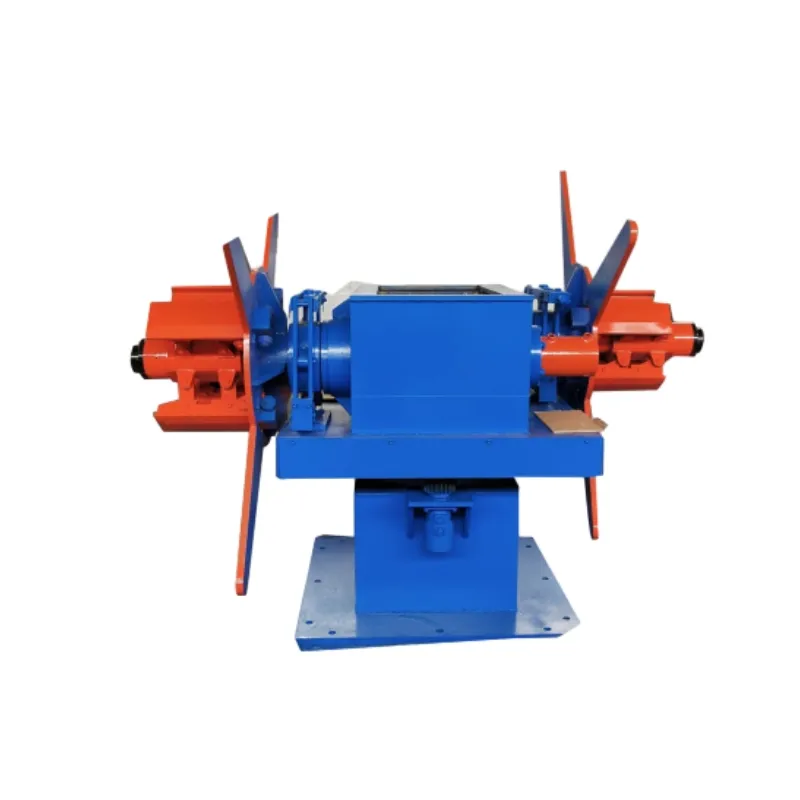standing seam rolling machine
The Standing Seam Rolling Machine A Revolution in Metal Roofing
In the ever-evolving landscape of construction and manufacturing, the standing seam rolling machine has emerged as a game-changer in the metal roofing industry. This innovative machinery is not merely a tool but a testament to technological advancement, efficiency, and precision in metalworking. Understanding its features, benefits, and applications can shed light on why it has become indispensable for builders and contractors alike.
What is a Standing Seam Rolling Machine?
A standing seam rolling machine is specialized equipment designed to produce metal panels with raised seams that interlock vertically. These seams not only provide a distinctive aesthetic appeal but also enhance the roofing system’s reliability against water and weather elements. Typically made from durable materials such as steel or aluminum, the panels produced by these machines are engineered for longevity.
Features and Technologies
Modern standing seam rolling machines come equipped with cutting-edge technologies that streamline the production process. Many of them offer computerized controls, allowing operators to program specifications such as panel widths, seam heights, and profiles with remarkable precision. Advanced systems can adjust settings on-the-fly, ensuring consistency across batches and reducing material waste.
These machines are also designed with robust construction to maximize durability and performance. Their heavy-duty rollers and framing are built to withstand high levels of stress while producing flawless panels that meet stringent industry standards. Safety features are integrated into the design, making them user-friendly while minimizing the risk of accidents during operation.
Benefits of Standing Seam Metal Roofs
1. Water Resistance The interlocking seams create a barrier that effectively channels water away, drastically reducing the risk of leaks and water damage. This is especially valuable in regions prone to heavy rainfall or snowfall.
standing seam rolling machine

2. Durability Metal roofs are known for their longevity, withstanding harsh weather conditions, including high winds, extreme temperatures, and heavy precipitation. A properly installed standing seam roof can last over 50 years with minimal maintenance.
3. Energy Efficiency Many standing seam roofing systems can be coated with reflective materials that reduce heat absorption. This can significantly lower energy costs during hot months, contributing to a building's overall sustainability.
4. Aesthetic Versatility With a variety of colors and finishes available, standing seam panels can be tailored to complement different architectural styles, making them an appealing option for commercial and residential projects alike.
5. Easy Installation With the aid of a standing seam rolling machine, the installation process is expedited, allowing projects to be completed more efficiently. The machine produces custom lengths on-site, ensuring a perfect fit while reducing the time spent in transportation and handling.
Applications
Standing seam roofing is increasingly popular in both commercial and residential sectors. It is commonly used for schools, warehouses, shopping malls, and high-end homes. The machines are also utilized in producing curved or custom-designed panels, making them suitable for a range of architectural challenges.
Moreover, the rising interest in green building practices has spurred demand for metal roofs, as they can often be integrated with solar panel systems, thus supporting energy-efficient designs.
Conclusion
The standing seam rolling machine represents a significant advancement in metal roofing technology. With its ability to produce durable, aesthetically pleasing, and energy-efficient panels, it has become a vital asset in the construction industry. As the demand for high-quality metal roofing continues to grow, the role of these machines will only expand, fostering greater innovation and efficiency in building designs. Embracing such technology not only enhances the quality of construction but also paves the way for a more sustainable future in the roofing sector.
-
High Frequency Straight Seam Welded Pipe Production Line-BzZhou Xinghua Machinery Equipment Manufacturing Co., LTD.|line pipe steel&welded gas pipeNewsJul.30,2025
-
High Frequency Straight Seam Welded Pipe Production Line-BzZhou Xinghua Machinery Equipment Manufacturing Co., LTD.|High Precision&Automated SolutionsNewsJul.30,2025
-
High Frequency Straight Seam Welded Pipe Production Line - BzZhou Xinghua Machinery Equipment Manufacturing Co., Ltd.NewsJul.30,2025
-
High Frequency Straight Seam Welded Pipe Production Line-BzZhou Xinghua Machinery Equipment Manufacturing Co., LTD.|Precision Welding, High EfficiencyNewsJul.30,2025
-
High Frequency Straight Seam Welded Pipe Production Line|BzZhou Xinghua|Precision Welding&EfficiencyNewsJul.30,2025
-
High Frequency Straight Seam Welded Pipe Production Line - BzZhou Xinghua|Precision Engineering&EfficiencyNewsJul.30,2025


